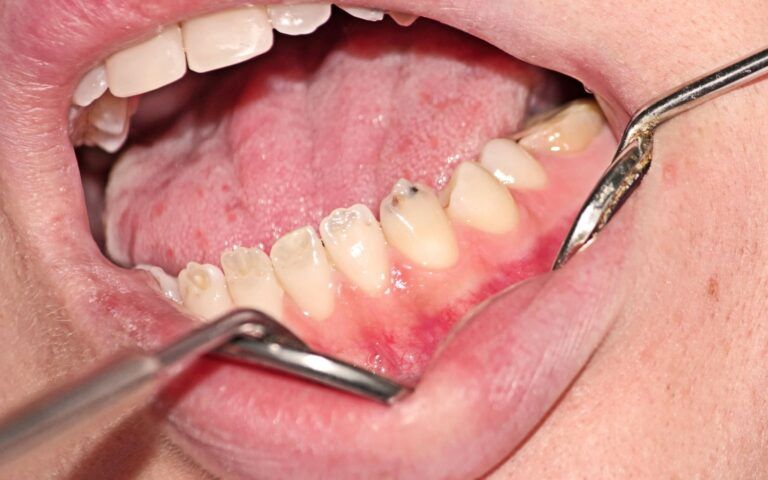What is Dentinogenesis Imperfecta?

Many factors influence our oral health, including our hygiene practices and how often we visit the dentist. Genetics also plays a role in our dental health and can lead to conditions such as Dentinogenesis Imperfecta (DI), which affects approximately 1 in 7,000 people. When facing oral health problems, seeking support from a dentist is crucial to maintain a healthy smile. Here’s what you should know about Dentinogenesis, how to recognize it, and your options for treatment.
What is Dentinogenesis Imperfecta?
Dentinogenesis imperfecta is a genetic mutation affecting dentin formation, one of the main components of our teeth. Our teeth consist of three layers; the outermost layer is enamel, the strongest material in the human body. Beneath the enamel is the dentin, a porous layer that provides sensation for the tooth’s pulp, the last layer. When the dentin is affected, it causes the teeth to become discolored or translucent.
This condition is often inherited from family history but can also appear spontaneously. The teeth can appear blue-gray or yellow-brown and translucent during the tooth’s development. DI also makes the teeth more vulnerable to breakage, wear, and tooth loss. The teeth may also be bulbous and exhibit abnormal wear, making them more susceptible to breakage and loss. In severe cases, the enamel may be thin, leading to rapid deterioration of the tooth structure. These symptoms can affect both primary (baby) and permanent (adult) teeth.
When your dentist diagnoses this condition, it can be categorized in the following ways:
- Class I: Resulting from osteogenesis imperfecta, a condition characterized by brittle and easily broken bones.
- Class II & III: These forms of DI occur in patients without any other observable inherited disorders.
While this condition cannot be cured, various treatment options can be used to manage its symptoms. These treatments aim to strengthen the teeth and prevent further damage. Some approaches include:
- Preventative Care: Regular brushing, flossing, and fluoride treatments can help strengthen the teeth and reduce the risk of tooth decay.
- Restorative Treatments: Various restorative techniques can help mitigate the structural issues of the tooth affected by DI. These include dental crowns, bonding, and cosmetic veneers to protect the tooth’s surface from further damage.
- Prosthetic Solutions: In cases where the patient’s tooth loss is severe, treatments such as dental implants, bridges, or dentures can be used to restore the patient’s oral health and appearance.
Patients with Dentinogenesis Imperfecta must maintain their visits with their dentist. Your dentist can provide personalized treatment plans to mitigate the risks associated with this condition.
Schedule a Visit With University Oral Surgery Center Today
When you’re dealing with a rare condition like DI or need specialized dental care, our team at University Oral Surgery is here to help. Located in Los Angeles, CA, we offer exceptional dental care. Start prioritizing your oral health by contacting us today at (310) 208-3471 to speak with Dr. Ramin Shabtaie about our services.
